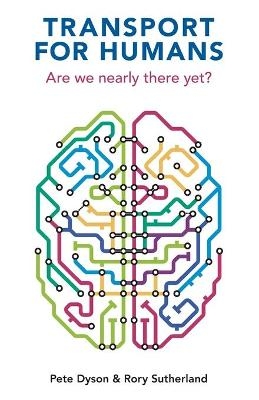
Transport For Humans
Are We Nearly There Yet?
Seiten
2021
London Publishing Partnership (Verlag)
978-1-913019-35-8 (ISBN)
London Publishing Partnership (Verlag)
978-1-913019-35-8 (ISBN)
This book maps out how to design better transport. Engineers measure success by speed and efficiency - but these are not the way that passengers think about a good trip. We choose how to travel, influenced not only by speed and time but by habit, status, comfort, variety - and many other factors that engineering equations don't capture at all.
Engineers plan transport systems, people use them. But the ways in which an engineer measures success - speed, journey time, efficiency - are often not the way that passengers think about a good trip. We are not cargo. We choose how and when to travel, influenced not only by speed and time but by habit, status, comfort, variety - and many other factors that engineering equations don't capture at all.
As we near the practical, physical limits of speed, capacity and punctuality, the greatest hope for a brighter future lies in adapting transport to more human wants and needs. Behavioural science has immense potential to improve the design of roads, railways, planes and pavements - as well as the ways in which we use them - but only when we embrace the messier reality of transport for humans.
This is the moment. Climate change, the coronavirus pandemic and changing work-life priorities have shaken up long-held assumptions. There is a new way forward. This book maps out how to design transport for humans.
Engineers plan transport systems, people use them. But the ways in which an engineer measures success - speed, journey time, efficiency - are often not the way that passengers think about a good trip. We are not cargo. We choose how and when to travel, influenced not only by speed and time but by habit, status, comfort, variety - and many other factors that engineering equations don't capture at all.
As we near the practical, physical limits of speed, capacity and punctuality, the greatest hope for a brighter future lies in adapting transport to more human wants and needs. Behavioural science has immense potential to improve the design of roads, railways, planes and pavements - as well as the ways in which we use them - but only when we embrace the messier reality of transport for humans.
This is the moment. Climate change, the coronavirus pandemic and changing work-life priorities have shaken up long-held assumptions. There is a new way forward. This book maps out how to design transport for humans.
Pete Dyson joined Ogilvy's Behavioural Science Practice in 2013. In 2020 he joined the UK Department for Transport as Principal Behavioural Scientist, tasked with the Covid-19 response, sustainable behaviour change and internal capability building. This book has been written in a personal capacity. Rory Sutherland is the vice chairman of Ogilvy UK and the co-founder of its Behavioural Science Practice. He is author of Alchemy: The Surprising Power of Ideas that Don't Make Sense, writes The Spectator's Wiki Man column and presents several series for Radio 4. His TED talks have been viewed more than 7 million times.
| Erscheinungsdatum | 27.10.2021 |
|---|---|
| Reihe/Serie | Perspectives |
| Verlagsort | London |
| Sprache | englisch |
| Maße | 138 x 216 mm |
| Themenwelt | Sachbuch/Ratgeber ► Natur / Technik ► Fahrzeuge / Flugzeuge / Schiffe |
| Technik ► Bauwesen | |
| Technik ► Fahrzeugbau / Schiffbau | |
| ISBN-10 | 1-913019-35-7 / 1913019357 |
| ISBN-13 | 978-1-913019-35-8 / 9781913019358 |
| Zustand | Neuware |
| Haben Sie eine Frage zum Produkt? |
Mehr entdecken
aus dem Bereich
aus dem Bereich
wie wird man Fachkundiger für Arbeiten an Hochvolt-Systemen im …
Buch | Softcover (2023)
Paul Christiani (Verlag)
CHF 95,15
Technik 1+2
Buch | Hardcover (2020)
Vogel Communications Group GmbH & Co. KG (Verlag)
CHF 179,95
Buch | Hardcover (2022)
Vogel Communications Group GmbH & Co. KG (Verlag)
CHF 109,95


